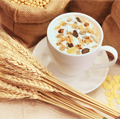Special Issue: Organic food market: organic agriculture, organic food production, distribution, and consumption
Guest Editor
Prof. Paweł Bryła
University of Lodz, Faculty of International and Political Studies, Department of International Marketing and Retailing, Lodz, Poland
Email: pawel.bryla@uni.lodz.pl
Manuscript Topics
In many countries, we can observe a dynamic development of the organic food market, although it is still a niche compared to the mainstream conventional food. It is worth investigating the way how this market is organised, what is the level of cooperation and competition, how integrated are various elements of the distribution chains, what are the motives of key participants, and what trends we can observe. This special issue is relevant for all papers related to organic agriculture, organic food production, organic food distribution, and organic food consumption. Selected topics which are possible to cover in this special issue include, but are not limited to, the following research questions:
1. Organic food market as a system. Relationships between key stakeholders involved in organic production (farmers, food processors), distribution (big distribution chains, specialised shops, online retailers), and consumption (various types of consumers). What are the forms of horizontal and vertical integration on this market? What are the incentives and barriers for cooperation?
2. Organic agriculture. Characteristics of organic farmers compared to conventional farmers. Motives for transitioning into organic agriculture. Causes of resigning from organic agriculture. Policies stimulating organic agriculture. Problems faced by organic farmers. Productivity of organic farming.
3. Organic food production. Types and strategies of companies involved in organic food processing. Supply chains of organic raw materials. Organic food packaging and labelling. Quality signs, certificates and logos for organic products. Problems faced by organic food producers.
4. Organic food distribution. In what kind of shops are various types of organic products available? Offline and online distribution models. Direct and indirect distribution. Various formats of organic retailers: hypermarkets, supermarkets, specialised shops. What are the policies and marketing strategies of organic food distributors? Importing and exporting organic food products.
5. Organic food consumption. What is the level of organic food consumption for various product categories and in various consumer segments? Who are regular buyers of organic food? Why do people choose organic products? What are the barriers to organic food consumption? What is the level of consumer ethnocentrism on the organic food market? What are the country-of-origin effects?
Keywords
organic food; organic market; organic agriculture; organic farming; organic production; organic processing; organic distribution; organic retailing; organic food consumption; consumer behaviour; vertical integration; horizontal integration; cooperation; competition; consumer ethnocentrism; country-of-origin effect
Instructions for authors
https://www.aimspress.com/aimsagri/news/solo-detail/instructionsforauthors
Please submit your manuscript to online submission system
https://aimspress.jams.pub/








 Abstract
Abstract HTML
HTML PDF
PDF